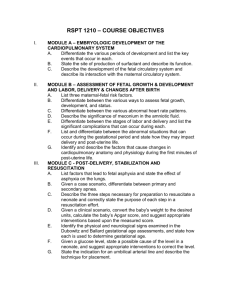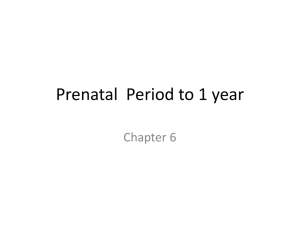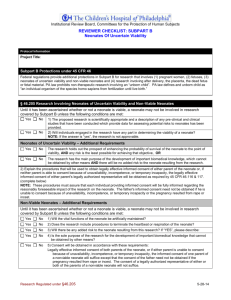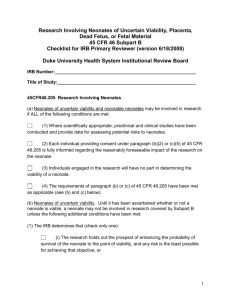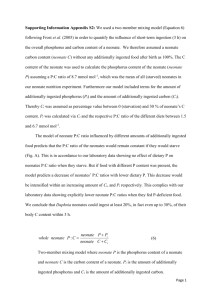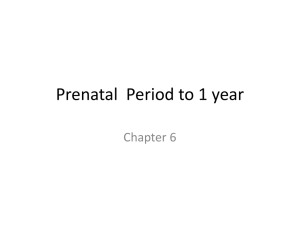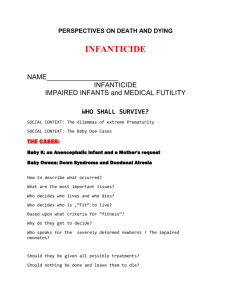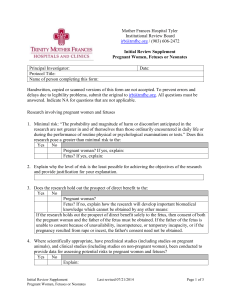Work or Breathing - Clinical Departments
advertisement
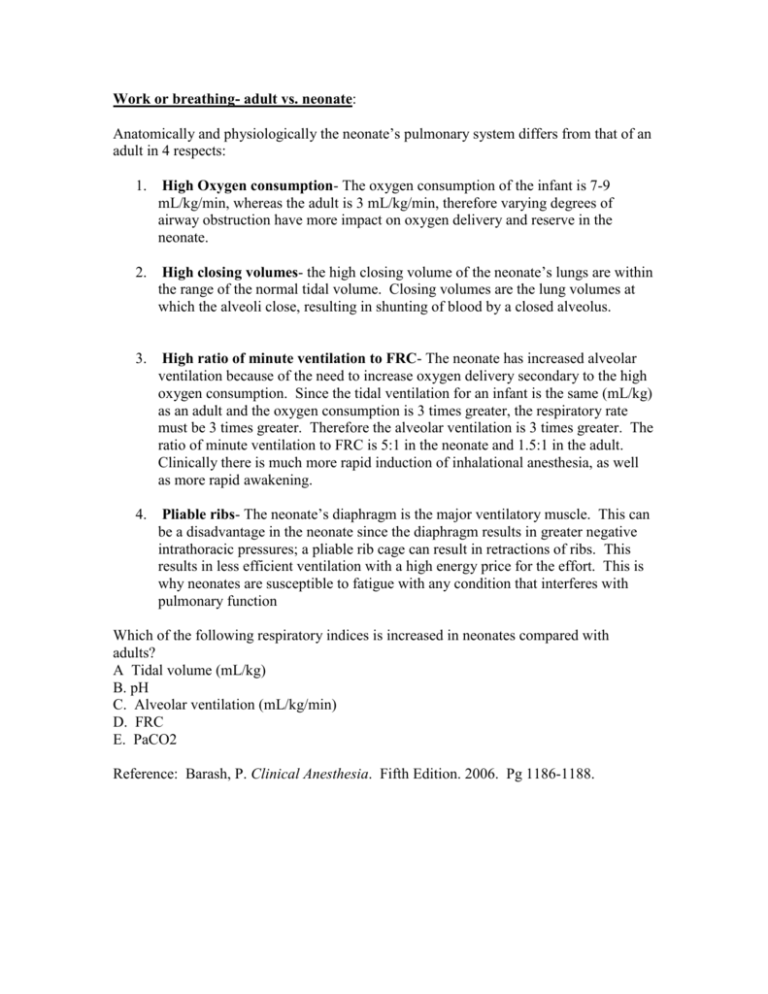
Work or breathing- adult vs. neonate: Anatomically and physiologically the neonate’s pulmonary system differs from that of an adult in 4 respects: 1. High Oxygen consumption- The oxygen consumption of the infant is 7-9 mL/kg/min, whereas the adult is 3 mL/kg/min, therefore varying degrees of airway obstruction have more impact on oxygen delivery and reserve in the neonate. 2. High closing volumes- the high closing volume of the neonate’s lungs are within the range of the normal tidal volume. Closing volumes are the lung volumes at which the alveoli close, resulting in shunting of blood by a closed alveolus. 3. High ratio of minute ventilation to FRC- The neonate has increased alveolar ventilation because of the need to increase oxygen delivery secondary to the high oxygen consumption. Since the tidal ventilation for an infant is the same (mL/kg) as an adult and the oxygen consumption is 3 times greater, the respiratory rate must be 3 times greater. Therefore the alveolar ventilation is 3 times greater. The ratio of minute ventilation to FRC is 5:1 in the neonate and 1.5:1 in the adult. Clinically there is much more rapid induction of inhalational anesthesia, as well as more rapid awakening. 4. Pliable ribs- The neonate’s diaphragm is the major ventilatory muscle. This can be a disadvantage in the neonate since the diaphragm results in greater negative intrathoracic pressures; a pliable rib cage can result in retractions of ribs. This results in less efficient ventilation with a high energy price for the effort. This is why neonates are susceptible to fatigue with any condition that interferes with pulmonary function Which of the following respiratory indices is increased in neonates compared with adults? A Tidal volume (mL/kg) B. pH C. Alveolar ventilation (mL/kg/min) D. FRC E. PaCO2 Reference: Barash, P. Clinical Anesthesia. Fifth Edition. 2006. Pg 1186-1188.
